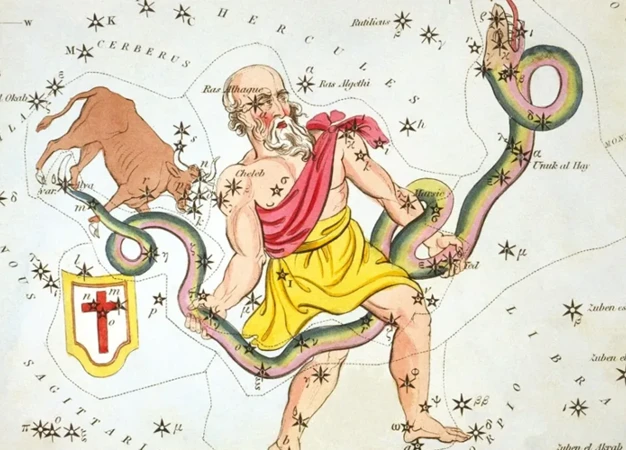In the vast celestial tapestry of the zodiac, there exists a constellation shrouded in mystery and intrigue: Ophiuchus, the Serpent Bearer. This enigmatic figure, often overlooked in traditional astrology, possesses a rich mythological background that stretches across ancient cultures. From Greek mythology’s tales of healing prowess to Babylonian legends of divine punishment, Ophiuchus has ignited fascination and controversy. Symbolically represented by a serpent-entwined figure, Ophiuchus holds the key to unlocking hidden truths and exploring alternative astrological possibilities. Join us on a captivating journey as we delve deeper into the origins, symbolism, and influence of Ophiuchus, shedding light on its mythical significance and its place in the ever-evolving realm of astrology.
Contents
- The Mythological Significance of Ophiuchus
- The Symbolism Behind Ophiuchus
- The Constellation and Stars of Ophiuchus
- The Influence of Ophiuchus in Astrology
- The Ongoing Controversy Surrounding Ophiuchus
- Conclusion
-
Frequently Asked Questions
- What is the origin of the constellation Ophiuchus?
- Why is Ophiuchus often overlooked in astrology?
- What is the symbolism behind the serpent in Ophiuchus?
- How does Ophiuchus relate to the Zodiac?
- What are the notable stars in the constellation of Ophiuchus?
- What stories depict Ophiuchus in the sky?
- What traits are associated with individuals born under the sign of Ophiuchus?
- Are Ophiuchus individuals compatible with other zodiac signs?
- Why was Ophiuchus neglected throughout history?
- Are there alternative zodiac systems that include Ophiuchus?
- References
-
Frequently Asked Questions
- 1. Can Ophiuchus, the Serpent Bearer, be found in Greek mythology?
- 2. How does Ophiuchus feature in Babylonian mythology?
- 3. What role does Ophiuchus play in Egyptian mythology?
- 4. What symbolism is attributed to the serpent in Ophiuchus?
- 5. What is the significance of the Staff of Asclepius in relation to Ophiuchus?
- 6. How is Ophiuchus linked to the Zodiac?
- 7. How can Ophiuchus be identified and located in the sky?
- 8. Are there any notable stars associated with Ophiuchus?
- 9. Are there any mythological stories depicting Ophiuchus in the sky?
- 10. How does the addition of Ophiuchus to the Zodiac impact astrology?
- References
- Read More
The Mythological Significance of Ophiuchus

The mythological significance of Ophiuchus, the Serpent Bearer, encompasses a rich tapestry of stories from various ancient cultures. In Greek mythology, Ophiuchus is believed to represent the figure of Asclepius, the god of healing and medicine. Asclepius was renowned for his ability to resurrect the dead, symbolizing the power of healing and transformation. In Babylonian mythology, Ophiuchus is associated with the story of Marduk, the Babylonian god who defeated the serpent Tiamat and created the world. Ophiuchus also finds a place in Egyptian mythology, where it is linked to the god Imhotep, known as the god of medicine and healing. The mythological tales woven around Ophiuchus offer a glimpse into the ancient belief systems and their reverence for the healing arts, divine punishment, and the mysteries of life and death. To explore the captivating connections between Ophiuchus and other intriguing topics, check out our articles on the compatibility between Ophiuchus and Scorpio or dive into the mysterious secrets of ancient civilizations that Ophiuchus may hold.
The Serpent Bearer in Greek Mythology
In Greek mythology, Ophiuchus holds a significant role as the Serpent Bearer, closely associated with the deity Asclepius, the god of healing and medicine. According to ancient tales, Asclepius possessed an extraordinary ability to revive the dead, which brought him both admiration and fear. One popular myth recounts how Asclepius used his knowledge of healing to bring back Hippolytus, a famed hero killed in a chariot accident. This act of defying the natural order of life and death angered the gods, leading to Zeus striking down Asclepius with a thunderbolt to restore balance. However, recognizing the value of Asclepius’ healing skills, Zeus later honored him by placing him among the stars as the constellation Ophiuchus. This celestial positioning emphasizes the profound connection between healing and the divine. To explore the intersection of mythological tales with the enigmatic Ophiuchus, and how it resonates with topics such as the evolution of method acting, delve deeper into the mythology and symbolism that surrounds this captivating constellation.
The Serpent Bearer in Babylonian Mythology
In Babylonian mythology, the Serpent Bearer holds a significant role, intertwining themes of creation, power, and divine triumph. The constellation Ophiuchus is linked to the legendary tale of Marduk, the patron god of Babylon. According to the myth, Marduk waged a fierce battle against the monstrous serpent Tiamat, who sought to plunge the world into chaos. Armed with his mighty bow and arrows, Marduk valiantly fought against Tiamat and eventually emerged victorious, slaying the serpent and bringing order to the universe. This epic battle between the Serpent Bearer and the serpent serves as a metaphorical representation of the struggle between good and evil, light and darkness. Marduk’s triumph symbolizes the triumph of order over chaos, and the celestial Ophiuchus embodies the courageous hero who vanquished the threatening serpent. The inclusion of the Serpent Bearer in Babylonian mythology showcases the cultural significance of Ophiuchus and its role in shaping ancient beliefs about cosmic forces and the balance of power.
Ophiuchus and Egyptian Mythology
Ophiuchus and Egyptian Mythology are intertwined in fascinating ways, as both Ophiuchus and the ancient Egyptian culture have a deep connection to healing and medicine. In Egyptian mythology, Ophiuchus is often associated with the god Imhotep. Imhotep was a highly revered figure who served as the adviser to the pharaoh Djoser during the Third Dynasty. He was regarded as a god of medicine, architecture, and wisdom. Imhotep was known for his exceptional healing abilities and was considered the patron deity of physicians. The Egyptians believed that Imhotep possessed immense knowledge and power to cure ailments, making him a central figure in their medical practices. Ophiuchus’s association with Imhotep in Egyptian mythology highlights the significance of healing and the divine connection to the serpent symbolism.
Ophiuchus’s connection to Egyptian mythology extends to the representation of snakes and serpents as symbols of knowledge, protection, and rejuvenation. In Egyptian belief, the cobra was considered a sacred animal and was often depicted on the headdresses of pharaohs, symbolizing their divine authority and protection. The intertwined serpents in the constellation of Ophiuchus can be seen as a continuation of this symbolism, representing the power of healing and regeneration that the serpent embodies.
The close association between Ophiuchus and Egyptian mythology demonstrates the reverence ancient cultures had for healing and the profound impact it had on their societies. The intertwining of healing deities and the symbolism of serpents in both Ophiuchus and Egyptian mythology underscores the importance placed on wellness, medicine, and spiritual rejuvenation in ancient Egypt.
The Symbolism Behind Ophiuchus

The symbolism behind Ophiuchus, the Serpent Bearer, is as intricate and profound as the constellation itself. The serpent, a prominent symbol within Ophiuchus, holds a multifaceted meaning across various mythologies and cultures. In many traditions, the serpent is recognized as a symbol of healing, rebirth, and transformation, representing the cyclical nature of life. Ophiuchus also bears resemblance to the Staff of Asclepius, a symbol associated with medicine and healing. The intertwining of the serpent around the staff reflects the balance between life and death, illness and recovery. This symbolism encapsulates the essence of Ophiuchus as a celestial entity linked to the powers of rejuvenation, wisdom, and divine knowledge. To explore intriguing connections related to Ophiuchus, delve into the world of Method Acting and its ties to Ophiuchus in our article on the evolution of Method Acting.
The Serpent as a Symbol of Healing and Rebirth
In the mythology surrounding Ophiuchus, the serpent holds great symbolism as a representation of healing and rebirth. Across different cultures, the serpent is often associated with transformation and renewal. In Greek mythology, the staff of Asclepius, the symbol of medicine, features a serpent entwined around a rod. This imagery signifies the shedding of skin, a powerful symbol of regeneration and healing. The ancient Greek deity Asclepius, attributed to the constellation Ophiuchus, possessed the ability to resurrect the dead and cure illness, embodying the transformative power of the serpent. Similarly, in Egyptian mythology, the god Imhotep, linked to Ophiuchus, is associated with serpents and is revered as the god of medicine and healing. The serpent’s association with healing and rebirth can be traced back to the ancient concept of shedding what no longer serves and embracing a new beginning. This symbolism of the serpent as a catalyst for transformation resonates deeply within the mythological significance of Ophiuchus, adding layers of depth and intrigue to its astrological and cultural significance.
The Staff of Asclepius and Ophiuchus
The Staff of Asclepius is an iconic symbol associated with the healing arts in Greek mythology. It consists of a single serpent entwined around a staff, and its connection to Ophiuchus is a matter of intrigue and speculation. Asclepius, who is often identified with the constellation Ophiuchus, was a renowned healer and the son of Apollo. He possessed the ability to resurrect the dead and was greatly revered in ancient Greece. The Staff of Asclepius has been linked to Ophiuchus due to their shared associations with healing and serpents. However, it’s important to note that the Staff of Asclepius features a single serpent, while the constellation Ophiuchus is depicted with two serpents. Despite this discrepancy, the symbolism of the serpent as a representative of healing and rejuvenation resonates strongly in both representations. The Staff of Asclepius stands as a timeless emblem representing the harmonious balance between life and death, and it continues to inspire those in the medical field. The connection between the Staff of Asclepius and Ophiuchus serves as a reminder of the deep-rooted relationship between mythology, symbolism, and the mysteries of healing.
The Zodiac and Ophiuchus
The Zodiac, with its twelve constellations, has long been a cornerstone of astrology. However, the inclusion of Ophiuchus adds an intriguing layer of complexity to this astrological framework. Ophiuchus, often referred to as the “13th sign,” disrupts the traditional alignment that assigns each month to a specific zodiac sign. This revelation has sparked debates and discussions among astrologers and enthusiasts alike.
The discovery of Ophiuchus within the zodiac system challenges the familiar boundary of the twelve-sign division. Some argue that Ophiuchus should be recognized as a legitimate zodiac sign, claiming that those born between November 29 and December 17 fall under its influence. Proponents of this idea emphasize the need for inclusivity and a broader understanding of the astrological chart.
However, critics argue that the introduction of Ophiuchus creates confusion and dilutes the symbolic meaning behind the zodiac signs. They claim that the traditional twelve signs have stood the test of time and changing them would undermine the centuries-old astrological interpretations.
Despite the controversies, it is fascinating to explore the characteristics attributed to Ophiuchus. Those influenced by this sign are said to possess traits such as a deep desire for knowledge, a strong sense of justice, and remarkable healing abilities. The addition of Ophiuchus to the zodiac expands the possibilities for personal horoscopes and self-discovery.
While the recognition of Ophiuchus as a zodiac sign remains a subject of debate, its existence presents an opportunity to reevaluate and reimagine the astrological landscape. Whether one chooses to follow the traditional twelve signs or embrace the potential influence of Ophiuchus, the exploration of this celestial figure adds complexity and depth to the study of astrology.
The Constellation and Stars of Ophiuchus
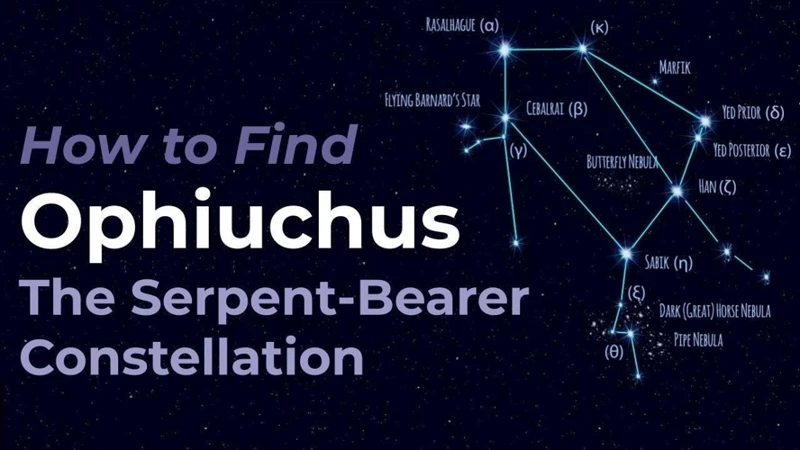
The constellation of Ophiuchus, also known as the Serpent Bearer, is located between the constellations of Scorpius and Aquila in the night sky. It is represented by a man holding a serpent, symbolizing the mythical figure of Asclepius, the Greek god of healing and medicine. Ophiuchus is home to several notable stars, each with its own unique characteristics and significance. One such star is Rasalhague (Alpha Ophiuchi), a binary star system that emits a bluish-white light and is one of the brightest stars in the constellation. Another prominent star is Sabik (Eta Ophiuchi), a binary star system that shines with a yellowish-white hue. Close to Sabik is the star Cebalrai (Beta Ophiuchi), which radiates with a reddish-orange glow. These celestial gems, along with many others in the constellation of Ophiuchus, form a captivating celestial tapestry that has fascinated stargazers and mythologists alike throughout history.
Identification and Location of Ophiuchus
Upon gazing at the night sky, identifying and locating the constellation of Ophiuchus can be an intriguing quest for stargazers and astrology enthusiasts alike. Ophiuchus, the Serpent Bearer, is positioned near the celestial equator, allowing it to be visible from both the Northern and Southern Hemispheres. To pinpoint Ophiuchus, one can start by locating the prominent constellation Scorpius. Ophiuchus lies to the east of Scorpius, appearing as a curving line of stars resembling a snake winding its way through the cosmos. It is often depicted as a figure clutching a serpent, symbolizing the mythology associated with this constellation. Ophiuchus spans an area of approximately 948 square degrees, making it one of the larger constellations in the night sky. The bright star Rasalhague, also known as Alpha Ophiuchi, serves as a guiding light to locate Ophiuchus, as it is the brightest star within this constellation. Other notable stars within Ophiuchus include Sabik, Yed Prior, Yed Posterior, and Cebalrai. With its distinct shape and the allure of its mythological origins, identifying and observing Ophiuchus adds another layer of mystery and wonder to our exploration of the celestial realm.
Notable Stars in Ophiuchus
Notable Stars in Ophiuchus illuminate the celestial landscape, adding depth and intrigue to this captivating constellation. One such star is Rasalhague, also known as Alpha Ophiuchi. Its name derives from the Arabic word for “the head of the serpent collector.” Rasalhague is a binary star system, consisting of a blue-white dwarf star and a yellow-white main sequence star. With its apparent magnitude of 2.07, Rasalhague ranks as the brightest star in Ophiuchus, drawing attention to its brilliance in the night sky.
Another prominent star in Ophiuchus is Sabik, also designated as Eta Ophiuchi. Sabik is a visual binary star, composed of two main-sequence stars that orbit around a common center of mass. From our vantage point on Earth, Sabik appears as a single point of light with a magnitude of 2.43. Interestingly, Sabik has been a subject of keen interest in astronomical research due to its potential exoplanet detection.
As we explore further, we encounter Barnard’s Star, a red dwarf that holds a significant place in Ophiuchus. With an apparent magnitude of 9.54, Barnard’s Star is too faint to be visible to the naked eye, but its proximity to our solar system makes it intriguing. In fact, Barnard’s Star is the fourth-closest known individual star to the Sun. Its relatively high proper motion has made it a subject of numerous scientific studies, offering insights into stellar motion and the dynamics of nearby stars.
These notable stars in Ophiuchus contribute to the celestial tapestry, inviting stargazers and astronomers alike to marvel at the wonders of the cosmos. Their unique characteristics and proximity remind us of the vastness and mysteries that lie beyond our planet’s boundaries, encouraging us to continue exploring and unraveling the secrets of the universe.
Mythological Stories Depicting Ophiuchus in the Sky
Mythological stories depicting Ophiuchus in the sky are scattered throughout various ancient cultures, offering unique perspectives on this celestial figure. In Greek mythology, Ophiuchus is associated with the tale of the great healer Asclepius. Legend has it that Asclepius was granted the power to resurrect the dead by the gods, and this ability brought him great renown. However, this act of defying the natural order of life and death displeased Zeus, who struck Asclepius down with a thunderbolt. To honor his healing prowess, Zeus placed Asclepius in the heavens as the constellation Ophiuchus, forever reaching towards the Serpent constellation, Serpens.
In Babylonian mythology, Ophiuchus is connected to the story of Gilgamesh, the legendary hero who embarked on a quest for immortality. In this tale, Gilgamesh encounters the great serpent guardian of the Tree of Life, which grants eternal youth. The serpent challenges Gilgamesh, but in the end, he fails to obtain immortality. As a result, the constellations Ophiuchus and Serpens were placed in the sky as a reminder of the consequences of seeking immortality and the pursuit of divine knowledge.
In Egyptian mythology, Ophiuchus is often associated with the god Imhotep, who is revered as the god of medicine and healing. Imhotep was a skilled physician and architect who was later deified for his contributions to society. Ophiuchus is identified with Imhotep’s role as a healer, reinforcing the link between the constellation and the power of healing that it symbolizes.
These mythological stories not only provide insight into the cultural significance of Ophiuchus but also highlight the universal themes of mortality, the human desire for immortality, and the importance of healing. Through these ancient narratives, Ophiuchus takes on a deeper meaning, reminding us of the timeless connections between the heavens and our earthly existence.
The Influence of Ophiuchus in Astrology
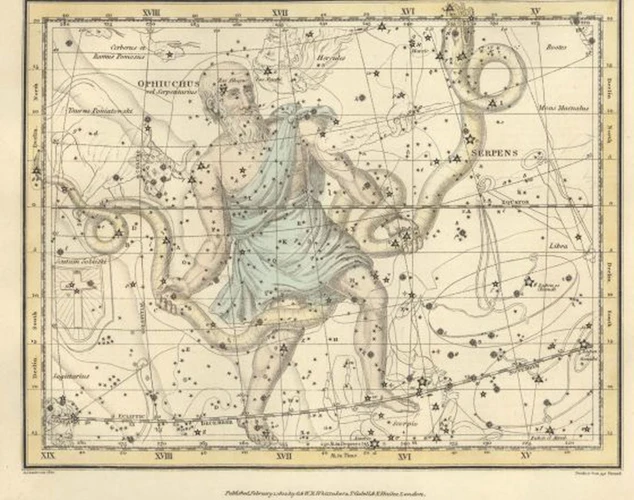
The influence of Ophiuchus in astrology is a topic that sparks heated debates and intriguing discussions. With its addition to the zodiac, Ophiuchus challenges the traditional twelve signs and introduces a thirteenth astrological sign into the mix. This controversial inclusion has raised questions about the characteristics and traits of individuals born under Ophiuchus. Astrologers have uncovered unique qualities associated with Ophiuchus individuals, such as their magnetic personality, intuitive nature, and penchant for seeking deep spiritual meaning. While some embrace the presence of Ophiuchus in astrology as an opportunity for expanded insight and self-discovery, others remain skeptical, questioning its relevance and impact. To explore the fascinating characteristics and relationship compatibility of Ophiuchus individuals, take a closer look at our article on Ophiuchus compatibility and relationships. Unravel the ongoing controversy surrounding Ophiuchus and its interpretations in modern astrology, and delve into alternative zodiac systems that may shed new light on this intriguing serpent bearer.
The Addition of Ophiuchus to the Zodiac
The addition of Ophiuchus to the zodiac is a topic that has sparked heated debates and controversy among astrologers and enthusiasts. Traditionally, the zodiac consisted of twelve signs, each occupying approximately 30 degrees of the celestial sphere. However, some argue that Ophiuchus should be recognized as the thirteenth constellation, thereby introducing a new sign to the zodiac. The astronomical basis for this argument stems from the fact that the sun actually passes through Ophiuchus for a period of time, approximately from November 30th to December 18th. Proponents of including Ophiuchus posit that this new sign would disrupt the established astrological system and potentially change the characteristics and traits associated with each zodiac sign. However, critics argue that the addition of Ophiuchus would require a major overhaul of the entire zodiac system and could undermine the foundations of astrology as we know it. The controversy surrounding the addition of Ophiuchus to the zodiac serves as a testament to the dynamic nature of astrology and the ongoing quest to uncover hidden celestial truths. Whether Ophiuchus will ever officially become a part of the zodiac remains a subject of speculation and interpretation within the astrological community.
Characteristics and Traits of Ophiuchus Individuals
Ophiuchus individuals possess a distinctive set of characteristics and traits that set them apart from others within the zodiac. They are known for their deep sense of intuition and heightened spiritual connection. Ophiuchus individuals are natural healers, drawn to the world of alternative medicine, energy healing, and holistic practices. They have a profound understanding of human psychology and possess the ability to empathize deeply with others. Ophiuchus individuals are often seen as wise and mysterious, with a thirst for knowledge and a desire to uncover hidden truths. They are inclined towards introspection and self-reflection, constantly seeking personal growth and transformation. With their strong leadership qualities and persuasive communication skills, Ophiuchus individuals have the potential to inspire and motivate others. However, they can also be fiercely independent and may struggle with authority or conformity. Their rebellious nature combined with their quest for truth can make them trailblazers and reformers. The characteristics and traits of Ophiuchus individuals depict them as enigmatic, intuitive, and driven beings with a unique perspective on life.
Ophiuchus Compatibility and Relationships
Ophiuchus Compatibility and Relationships are a subject of intrigue and curiosity for those seeking astrological insight. As an unconventional addition to the zodiac, individuals born under the sign of Ophiuchus possess unique traits and characteristics that can influence their compatibility with other signs. While traditional astrology recognizes twelve zodiac signs, the inclusion of Ophiuchus expands the possibilities for relationship dynamics.
Ophiuchus individuals are known for their magnetic and charismatic personalities. They exude confidence and possess a natural charm that can draw people towards them. In relationships, they seek deep connections and intellectual stimulation. Their open-mindedness and curiosity make them excellent communicators, allowing them to connect with people from various walks of life.
Compatibilities can vary depending on the specific astrological chart and individual traits, but Ophiuchus is often seen as compatible with other water signs such as Scorpio and Pisces. These signs share a deep emotional understanding and a desire for spiritual growth. The intense passion of Scorpio can complement the zest for life that Ophiuchus brings to a relationship, while the compassionate and empathetic nature of Pisces can create a harmonious connection.
However, it’s essential to remember that astrology is not a definitive guide to compatibility, and individual experiences may vary. Building strong and fulfilling relationships requires open communication, mutual respect, and understanding between partners, regardless of their astrological signs.
For a comprehensive overview of Ophiuchus compatibility with other signs, refer to the table below:
| Ophiuchus Compatibility | Compatible Signs | Incompatible Signs |
|---|---|---|
| Scorpio | Cancer, Pisces, Virgo | Leo, Aquarius |
| Pisces | Cancer, Scorpio, Capricorn | Gemini, Sagittarius |
| Gemini | Aries, Leo, Libra | Virgo, Pisces |
| Sagittarius | Leo, Libra, Aquarius | Taurus, Cancer |
Remember, compatibility is not limited to sun signs alone. It is important to consider the entire birth chart for a comprehensive understanding of compatibility and to embrace the uniqueness and individuality of each person.
The Ongoing Controversy Surrounding Ophiuchus
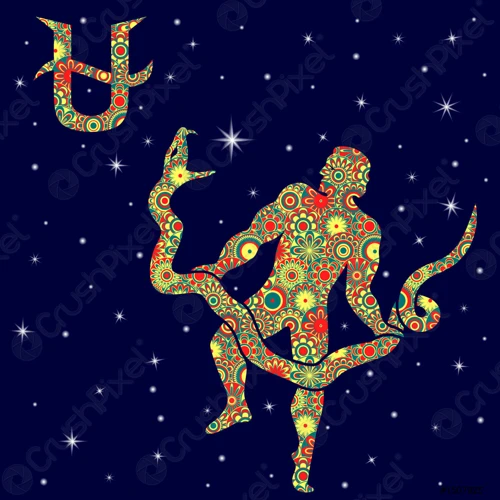
The realm of astrology is not immune to controversy, and Ophiuchus is certainly no exception. The ongoing debate surrounding Ophiuchus stems from various factors, including historical neglect and its recent entry into popular discussions. Many argue that Ophiuchus should be included as a thirteenth zodiac sign, disrupting the traditional twelve sign system. This perspective is met with resistance from those who prefer to adhere to the long-standing astrological conventions. Interpretations and characteristics attributed to Ophiuchus individuals vary, adding to the confusion. Some astrologers argue that Ophiuchus personalities possess traits such as wisdom, healing abilities, and strong intuition, while others question the validity and consistency of such claims. The controversy surrounding Ophiuchus continues to ignite passionate discourse within astrology circles, leaving many to ponder the role and significance of this enigmatic constellation.
Historical Neglect and Rediscovery
The topic of Historical Neglect and Rediscovery surrounding Ophiuchus sheds light on the overlooked and often forgotten status of this constellation in the annals of astrology. For centuries, Ophiuchus was excluded from the traditional zodiac system, resulting in its minimal recognition and study. Historically, the zodiac was believed to consist of only twelve signs, each representing a specific period of the year. However, in the 20th century, astronomers redefined the boundaries of the constellations, leading to the discovery that Ophiuchus lies along the ecliptic, the path the Sun appears to travel in the sky. This revelation sparked a renewed interest in Ophiuchus and its place among the zodiac constellations. Despite this rediscovery, Ophiuchus still remains a controversial and debated addition to the zodiac, with some accepting its inclusion as the thirteenth sign and others adhering to the traditional twelve-sign system. The historical neglect and subsequent rediscovery of Ophiuchus illuminate the ever-evolving nature of astrology, where new discoveries and interpretations can challenge centuries-old beliefs and traditions.
Interpreting Ophiuchus in Modern Astrology
Interpreting Ophiuchus in modern astrology has been a subject of intense debate and speculation. As a relatively recent addition to the zodiac, Ophiuchus has garnered both enthusiasm and skepticism from astrologers and enthusiasts alike. Some proponents argue that Ophiuchus represents a thirteenth sign, urging us to reconsider the traditional twelve-sign system. They believe that individuals born under Ophiuchus possess unique traits and characteristics that set them apart from the rest. Others interpret Ophiuchus as a powerful archetype representing healing, transformation, and wisdom. They see it as a reminder to embrace the serpent’s energy within ourselves, symbolizing the potential for inner growth and personal evolution.
However, critics argue that including Ophiuchus in astrology disrupts the established system and dilutes the meaning of the zodiac signs. They claim that the traditional twelve signs have been widely accepted and studied for centuries, and introducing Ophiuchus could lead to confusion and inconsistencies. The positioning of the constellations has shifted over time due to the Earth’s wobbling axis, further complicating the interpretation of Ophiuchus and its influence on astrological charts.
Ultimately, the interpretation of Ophiuchus in modern astrology remains a contentious topic. Some astrologers incorporate Ophiuchus into their readings and horoscopes, acknowledging its potential significance, while others choose to adhere to the traditional zodiac system. Regardless of where one stands on the matter, exploring Ophiuchus in astrology opens up intriguing discussions about the fluidity of the zodiac and the ever-evolving nature of our understanding of the cosmos.
Alternative Zodiac Systems and Ophiuchus
Alternative Zodiac Systems have emerged over the years, challenging the traditional framework and incorporating Ophiuchus into their interpretations of the zodiac. One such system is the Sidereal Zodiac, which takes into account the precession of the equinoxes and adjusts the positions of the constellations based on their actual locations in the sky. In the Sidereal Zodiac, Ophiuchus is recognized as a legitimate constellation, occupying a portion of the Scorpio zodiac sign. This alternative approach aims to align the zodiac more accurately with astronomical observations. Another system that acknowledges Ophiuchus is the 13-Sign Zodiac, which proposes the addition of Ophiuchus as a thirteenth zodiac sign alongside the traditional twelve. Advocates of this system argue for a more inclusive and nuanced understanding of astrology, incorporating the unique traits and characteristics associated with Ophiuchus individuals. It’s important to note that these alternative zodiac systems, including Ophiuchus, have gained popularity and followers, but they have not been widely adopted or recognized by mainstream astrology. As the debate surrounding Ophiuchus and its place in astrology continues, these alternative systems provide alternative perspectives for those seeking a broader understanding of themselves and the cosmos.
Conclusion
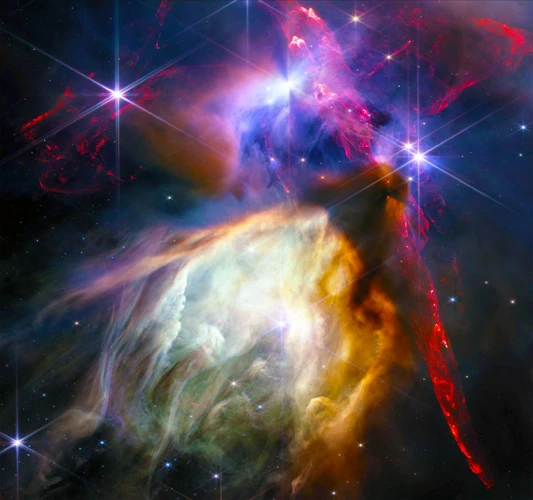
In conclusion, the exploration of Ophiuchus, the Serpent Bearer, has revealed a captivating blend of mythological significance, symbolism, and astrological influence. Through a closer examination of its origins, we have unearthed the mythical tales from Greek, Babylonian, and Egyptian cultures, highlighting the profound connections between healing, divine punishment, and the mysteries of life and death. The symbolism of Ophiuchus, embodied in the serpent and the staff, speaks of healing, rebirth, and the exploration of hidden truths. In the realm of astrology, the addition of Ophiuchus to the zodiac has sparked controversy and debate, challenging traditional notions and offering new possibilities. The ongoing fascination with Ophiuchus, from its historical neglect to its modern interpretation, underscores the ever-evolving nature of astrology and the human desire to unravel the mysteries of the cosmos. As we continue to delve deeper into the realms of mythology, symbolism, and astrology, Ophiuchus remains an intriguing figure, inviting us to embrace alternative perspectives and explore the uncharted territories of the zodiac. Whether it is the compatibility with Scorpio or the influence of Ophiuchus on our lives, it is through the lens of Ophiuchus that we can expand our understanding of the celestial wonders that surround us.
Frequently Asked Questions
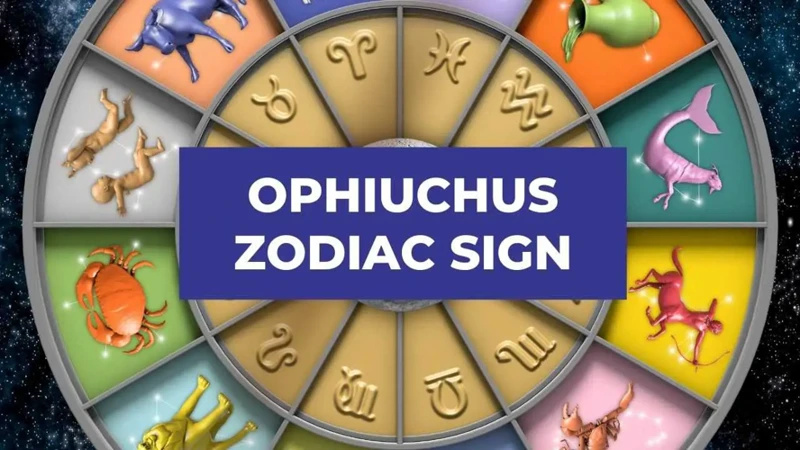
What is the origin of the constellation Ophiuchus?
Ophiuchus has its roots in ancient mythologies, with different cultures attributing various meanings to the constellation. Greek mythology associates it with Asclepius, the god of healing and medicine. Babylonian mythology associates it with Marduk’s triumph over the serpent Tiamat, while Egyptian mythology connects it to the god Imhotep, associated with healing and medicine.
Why is Ophiuchus often overlooked in astrology?
Ophiuchus is often overlooked in traditional astrology because it was not included in the original twelve zodiac signs established by the Babylonians. The focus remained on the familiar twelve signs, leading to the omission of Ophiuchus in the astrological system for centuries.
What is the symbolism behind the serpent in Ophiuchus?
The serpent in Ophiuchus carries multiple symbolic meanings across different mythologies and cultures. It is often associated with healing, rebirth, and wisdom. In Greek mythology, the serpent symbolizes Asclepius’ power to resurrect the dead, representing the transformative nature of healing.
How does Ophiuchus relate to the Zodiac?
Ophiuchus is not traditionally recognized as one of the twelve zodiac signs. However, some astrologers have suggested adding Ophiuchus to the zodiac, with each sign occupying slightly different dates in the calendar. This idea opens up new possibilities and interpretations within the astrological framework.
What are the notable stars in the constellation of Ophiuchus?
Ophiuchus is home to several notable stars, including Rasalhague (Alpha Ophiuchi) and Sabik (Eta Ophiuchi). Rasalhague, one of the brightest stars, has both historical and cultural significance, while Sabik is a binary star system comprising two stars that orbit around each other.
What stories depict Ophiuchus in the sky?
One of the famous stories associated with Ophiuchus is the Greek myth of the Twelve Labors of Heracles (Hercules) where he encounters a giant serpent while completing his tasks. This reflects the prominence of Ophiuchus in the night sky and its connection to mythical tales of heroism and challenges.
What traits are associated with individuals born under the sign of Ophiuchus?
As Ophiuchus is not a recognized zodiac sign in traditional astrology, there are no officially defined traits associated with individuals born under this constellation. However, some astrologers suggest that Ophiuchus individuals may possess qualities such as healing abilities, wisdom, and an interest in the occult or mystical.
Are Ophiuchus individuals compatible with other zodiac signs?
As Ophiuchus is not widely recognized in traditional astrology, compatibility between Ophiuchus and other zodiac signs is not well-established. However, some astrologers speculate that Ophiuchus individuals may share compatibility traits with neighboring signs like Scorpio and Sagittarius.
Why was Ophiuchus neglected throughout history?
Ophiuchus’ neglect throughout history can be attributed to various factors. Its omission from the original Babylonian zodiac system and the prominence of the twelve zodiac signs contributed to its overshadowing. Additionally, the complexity of incorporating a thirteenth sign into astrology and the focus on established traditions limited its recognition.
Are there alternative zodiac systems that include Ophiuchus?
Yes, there are alternative zodiac systems that include Ophiuchus as one of the zodiac signs. These alternative zodiac systems offer different interpretations and perspectives on astrology, providing a wider range of possibilities for individuals seeking to understand their astrological identities.
References
Frequently Asked Questions

1. Can Ophiuchus, the Serpent Bearer, be found in Greek mythology?
Yes, Ophiuchus has mythological significance in Greek mythology. It is linked to the figure of Asclepius, the Greek god of medicine and healing.
2. How does Ophiuchus feature in Babylonian mythology?
In Babylonian mythology, Ophiuchus is associated with the god known as Ningishzida. He is often depicted as a divine healer and protector of the underworld.
3. What role does Ophiuchus play in Egyptian mythology?
Ophiuchus is connected to the Egyptian god Imhotep, known as the god of medicine and healing as well. Imhotep is revered for his ability to cure diseases.
4. What symbolism is attributed to the serpent in Ophiuchus?
The serpent is commonly seen as a symbol of healing, transformation, and rebirth in various mythological and cultural contexts. It represents the restorative powers of Ophiuchus.
5. What is the significance of the Staff of Asclepius in relation to Ophiuchus?
The Staff of Asclepius, which features a serpent coiled around a staff, is a symbol associated with healing and medicine. It represents the association between Ophiuchus and the art of healing.
6. How is Ophiuchus linked to the Zodiac?
Ophiuchus is often referred to as the “13th sign of the Zodiac.” It is not officially recognized as part of the traditional Western Zodiac system but has gained attention and interest in recent years.
7. How can Ophiuchus be identified and located in the sky?
Ophiuchus can be identified by looking for the constellation shaped like a man holding a serpent. It can be found between the constellations of Scorpius and Sagittarius in the night sky.
8. Are there any notable stars associated with Ophiuchus?
One notable star in Ophiuchus is Rasalhague, also known as Alpha Ophiuchi. It is the brightest star in the constellation and has been referred to as the “Head of the Serpent Bearer.”
9. Are there any mythological stories depicting Ophiuchus in the sky?
Yes, there are various mythological stories associated with Ophiuchus. One such story involves the Greek god Apollo sending a deadly scorpion to attack Orion, but Ophiuchus intervenes and defeats the scorpion.
10. How does the addition of Ophiuchus to the Zodiac impact astrology?
The addition of Ophiuchus to the Zodiac would result in a shift in astrological dates and the interpretation of personality traits. However, this addition remains a topic of controversy and debate within the astrology community.
References
- Legends of the Thirteenth Zodiac
- Ophiuchus Location, Mythology & Features
- Is Ophiuchus the 13th constellation of the zodiac?
